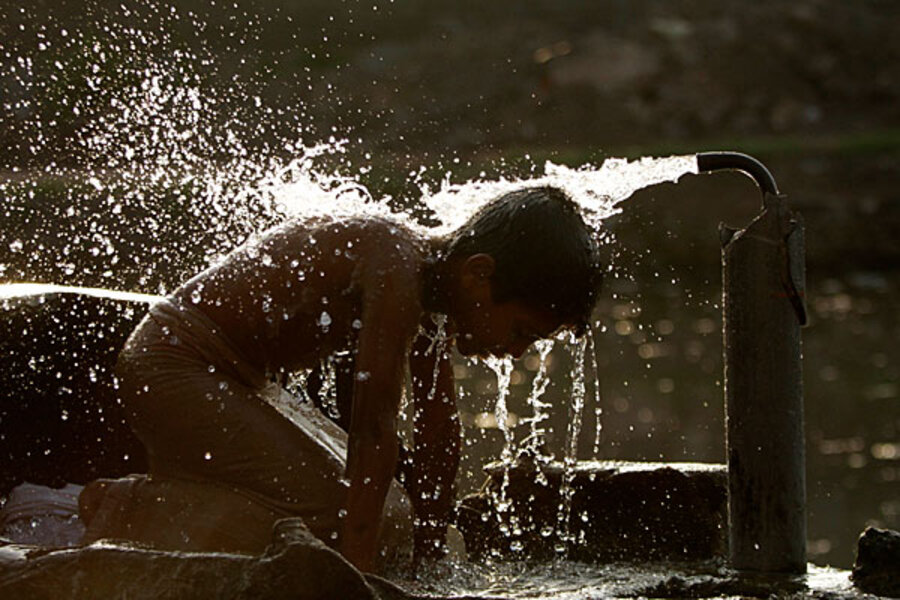Millennium Development Goals: Clean water checked off list. Now back to work.
Loading...
In these economic times, you take whatever good news you can get.
Last week, the World Bank announced that developing countries appear to have already met their goal of cutting global poverty rates in half by 2015. China was the driving force behind this change, as its booming economy put more and more people to work and lifted millions of its citizens out of the ranks of those who earn less than $1.25 a day.
Today, the World Health Organization and the UN Children’s Fund (UNICEF) announced that the world had also met ahead of schedule the so-called Millennium Development Goal of halving the proportion of the world’s population without access to safe drinking water. More than 2 billion people gained access to drinking water between 1990 and 2010.
Ban Ki-moon called this a “great achievement” and UNICEF director Anthony Lake said that thousands of children will be saved each day because of the improvements. But he added that there was still much to be done. At least 783 million people – 11 percent of the world’s population – rely on unsafe drinking water, including open ponds where agricultural or industrial runoff taints water quality.
Meeting goals ahead of a deadline is never a bad thing, but declaring victory before the fight is truly over can be unwise. The fact that much of the progress on halving poverty and increasing access to drinking water is due to the actions of one very large nation – China – skews the data, and hides the relative lack of progress in much of Africa, where poverty rates, infant mortality rates, and maternal mortality rates remain troublingly high, and where drinking water sources remain unimproved.
And when one considers the enormity of the overall task of the UN’s Millennium Development Goals – of ending poverty and hunger, providing universal education, fostering gender equality, improving children’s health, improving maternal health, combating HIV and AIDS, creating environmental sustainability, and fostering global partnership – there is still much work to be done.
“There’s a good and bad story here,” says Anne Goddard, president and CEO at ChildFund International in Richmond, Va. “The good story is that extreme poverty has halved, and the bad story is that it’s China that has driven that number forward. In Africa, extreme poverty is still at about 50 percent, but it’s dropping — just at a slower pace than in the rest of the world. So you have to look beyond the big number and down to regional differences.”
“This doesn’t mean there are no success stories in Africa,” says Ms. Goddard, in a phone interview, “but most of the continent is lagging behind. I have some hope. We are only two-thirds of the way toward 2015. So that gives us time to reflect on what works and what doesn’t work.”
There’s a great balance in trying to set goals that are achievable, and in pointing out that goals are still unmet. Infant mortality rates for children under the age of 5 are dropping, but malnutrition is still a problem, and deaths for birthing mothers remain stubbornly high. UN reports and the news reporting about UN goals should strike a balance in encouraging people to keep working, without making the challenge seem unattainable.
“And the great thing about goals is that when you set a goal, you inspire people to meet that goal,” she says. “When I think that within my working life, we might have halved poverty, halved infant mortality, halved maternal mortality rates, that gives me inspiration.”





